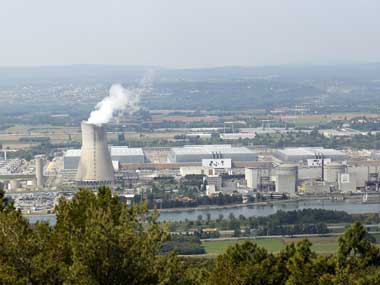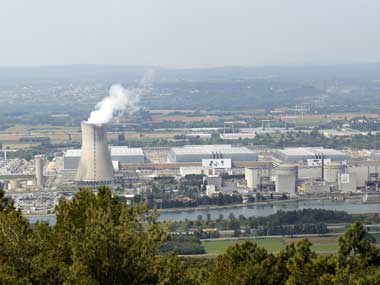By Yogi Aggarwal
Yet another nuclear accident has again turned the spotlight on this controversial and risky technology. One person was killed and four injured in a blast at a nuclear re-processing plant in southern France. Though it seemed minor compared to the meltdown at Japan’s Fukushima nuclear plants this March, it galvanised protesters in India at the Kudankulam reactor in Tamil Nadu.
The blast in France came when 127 people were sitting on a fast in protest against the 1,000 mw Russian-built reactor nearing completion at Kudankulam. Misgivings about the danger to their lives and environment had begun after the Fukushima meltdown in March and about 10,000 villagers had gathered nearby. Following the protest, Chief Minister Jayalalithaa was constrained to write to a letter to Manmohan Singh asking him to put Kudankulam on hold till the misgivings are removed.
[caption id=“attachment_89015” align=“alignleft” width=“380” caption=“View of the Areva combustible fabrication plant with its chimney (L) and EDF’s nuclear power plant (R) in Saint-Paul-Trois-Chateaux. Benoit Tessier/France”]
 [/caption]
[/caption]
But can these misgivings really be removed, when the track-record of nuclear power has been so poor?
In India, nuclear power has become a white elephant, devouring tens of thousands of crores for over half a century. A few figures serve to illustrate this point. The Department of Atomic Energy (DAE) budget for 2011-12 was Rs 9,085 crore, while the Nuclear Power Corporation generated revenues of Rs 6,016 crore from its capacity of 4,780 mw.
By comparison, a wind energy company like Suzlon, in its 16 years of existence, has installed 17,000 mw of wind generation equipment, and has a worldwide annual manufacturing capacity of 5,000 mw. Last year it had a turnover of Rs 17,900 crore.
Obviously, the DAE does not have power generation as its main responsibility and its budget includes research and ‘strategic’ areas. But this only goes to show nuclear power generation cannot be justified on economic grounds.
Neither can it be justified on environmental grounds like lowering green-house gases. Other sources like wind and solar do this without the added risk of exposing the public to nuclear radiation. There are now indications that the government, in its hurry to pass nuclear power projects such as the one at Jaitapur, is willing to dilute safety norms.
Unlike nuclear reactors, where the risks of accident have been experienced on a big scale in Chernobyl, Three Mile Island and Fukushima, the dangers from fuel reprocessing are less well known. Highly radioactive spent fuel from running reactors is reprocessed is a series of chemical operations that separates plutonium and uranium from other nuclear waste. The separated plutonium can be used to fuel reactors, but also to make nuclear weapons.
Though the Indo-US nuclear deal signed in 2005 stopped the transfer of reprocessing technology, India already had three plants operating. The recent decision of the Nuclear Suppliers’ Group (NSG) calling for adherence to the Nuclear Non-Proliferation Treaty (NPT) for the transfer of reprocessing technologies has unsettled the nuclear establishment in India. It need not have done so since we have developed these technologies independently on our own.
The Boston-based Union of Concerned Scientists has, in a recent report, characterised nuclear reprocessing as “dangerous, dirty and expensive”. It increases the risk of nuclear terrorism since only 10 kg of plutonium are needed to make a bomb. It increases the risk of proliferation of nuclear bombs, and adds considerably to the costs of nuclear power.
Following the Fukushima meltdown, a disaster whose consequences are still unravelling and could be much worse than previously imagined, governments around the world have put nuclear plans on hold since a majority of people oppose building new reactors. Germany has been the most proactive in this, closing down seven of its 19 nuclear reactors and announcing that the rest would be phased out by 2022.
Developing countries like India and China have, however, gone ahead with their nuclear plans. China has 11 nuclear-powered reactors already and plans another 20. India has 14 operational plants, and another two are nearing completion at Kundakulam. Besides, another 30 are planned, including six at Jaitapur in Maharashtra, with a total capacity of 31,000 mw.
Most of the planned reactors are being built by companies such as Areva of France, America’s GE and others, as they find it easier to get contracts in such emerging markets rather than at home, where the opposition is stronger.
Earlier this month, the government tabled in the Lok Sabha the much-awaited Nuclear Safety Regulatory Authority Bill, 2011, under which a Nuclear Safety Regulatory Authority (NSRA) is to be set up. AK Gopalakrishan, former Chairman of the Atomic Energy Regulatory Board (AERB), argues in The Hindu, that “The government’s intention in creating the NSRA in its present form appears to be merely to effect a ‘regulatory capture’ of the nuclear sector.”
The bill is required to be consistent with the “international obligations of India”. This could mean, states Gopalakrishnan, that if the prime minister has promised the French President or the US government that India would buy six Areva reactors or 10,000 mw of US reactors without any safety or cost evaluation, that unilateral and personal commitment will get labelled as one of “India’s international obligations”.
With our knowledge of the dangers nuclear reactors pose, it is time to question the need for nuclear power. This is not the time for us to be bullied by the powerful nuclear lobby in diluting further the already weak safety framework.
)